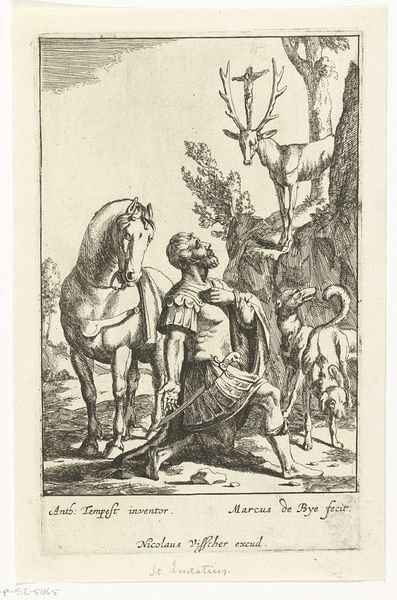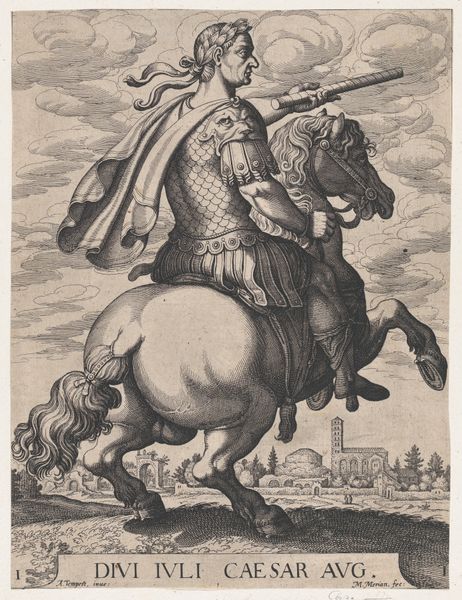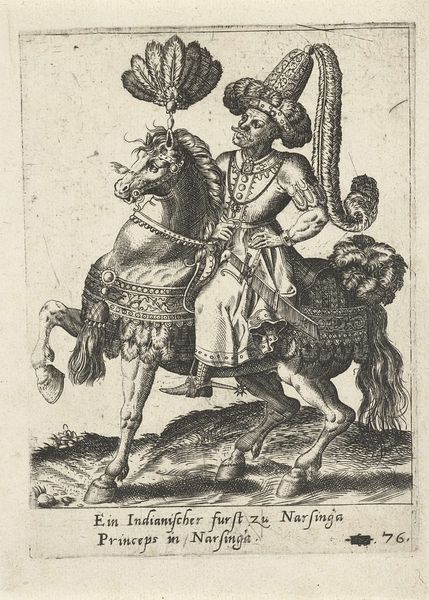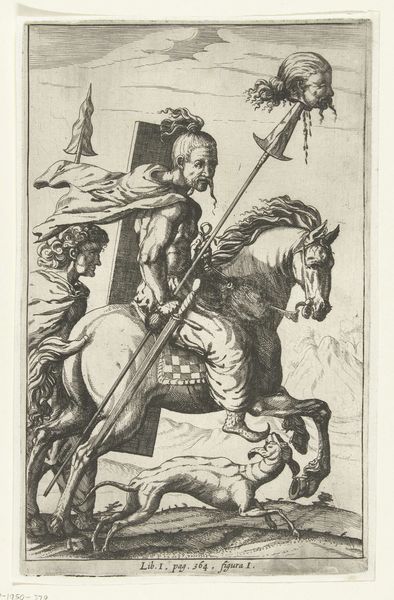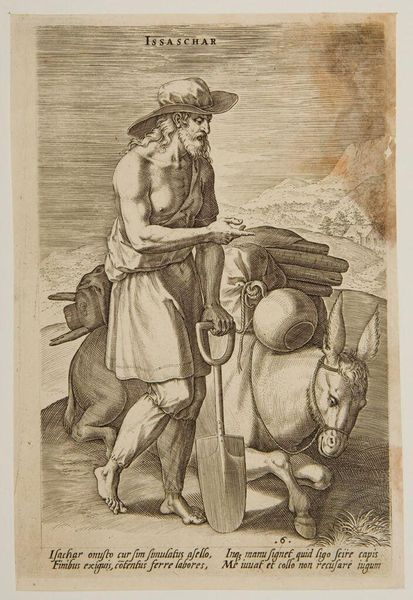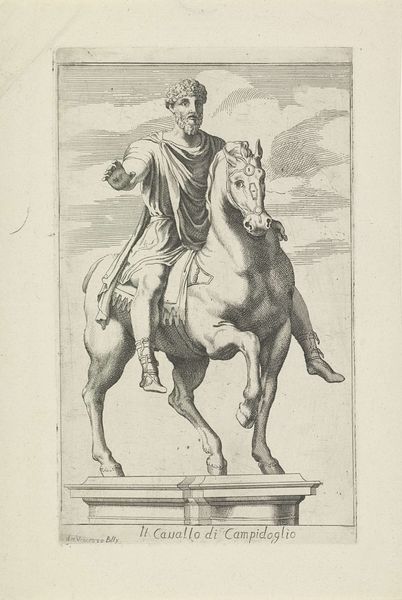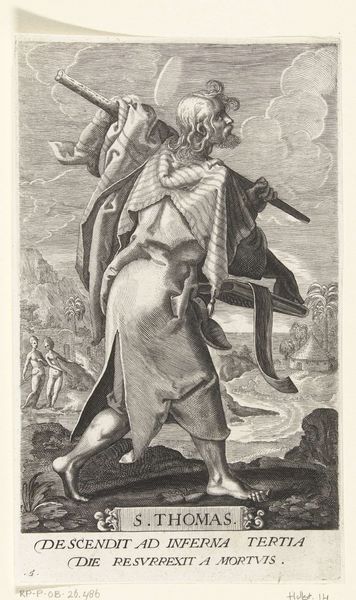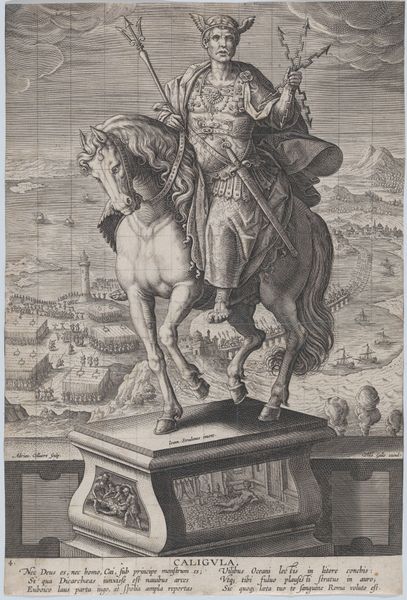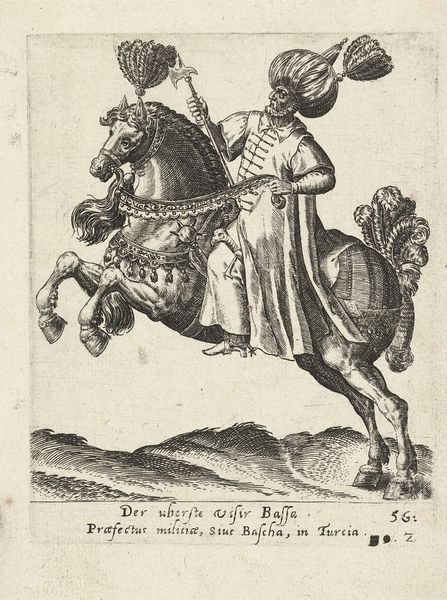
print, engraving
#
portrait
#
baroque
# print
#
figuration
#
geometric
#
line
#
history-painting
#
engraving
Dimensions: height 294 mm, width 208 mm
Copyright: Rijks Museum: Open Domain
Editor: Here we have Luca Ciamberlano's "Soldaat te paard met lans," made in 1618. It’s a print, an engraving to be exact. The rider seems powerful, maybe a bit intimidating. What do you see in this piece, especially considering the time it was made? Curator: It's fascinating to view this "Soldier on Horseback with Lance" through the lens of power structures and social identities prevalent in the 17th century. The Baroque period, marked by dramatic compositions and heightened emotion, often served as a vehicle for communicating authority. Think about the very act of creating and distributing this print. Who had access to it? What kind of message about military strength and nobility was Ciamberlano trying to propagate during the rise of nation-states and colonial ventures? Consider also the almost theatrical presentation, typical of Baroque portraiture: Does it romanticize warfare, obscuring its grim realities? Editor: I hadn't considered the distribution aspect and who the artwork was aimed at. The power of printmaking as a means to communicate political ideas is interesting to note. The rider’s polished armour does make war look glamorous. But weren't there always dissenting voices, challenging such displays of power? Curator: Absolutely. While dominant narratives celebrated aristocratic power, art also became a platform for challenging hierarchies and questioning oppressive systems. Looking closer, we might examine what the *absence* of any real conflict reveals about anxieties of the era. Was Ciamberlano promoting the glory or creating a piece designed to evoke complex feelings of a martial world? How do geometric forms affect perceptions about justice? Such a line of enquiry provides critical insights to cultural biases, prompting audiences toward equity. Editor: So it's about unpacking those hidden layers and understanding how the art relates to historical and cultural events to tell its true story. Curator: Exactly! It’s about revealing what isn't immediately visible. That to me is the real activist art. Editor: Thanks! It provides a deeper, more critical appreciation for Baroque portraiture than I initially had.
Comments
No comments
Be the first to comment and join the conversation on the ultimate creative platform.
